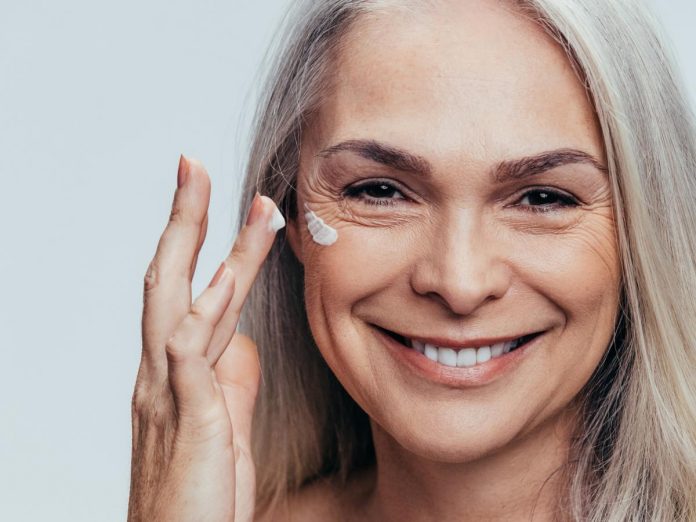Your skin does a big job for you. In fact, each inch of skin is made up of 19 million skin cells, 650 sweat glands, 20 blood vessels, and 1,000 nerve endings, according to the American Academy of Dermatology (AAD). “The skin is the body’s largest organ. It’s our first line of defense against the outside world, including irritants and allergens. Maintaining a healthy skin barrier is crucial to this mission,” says Heidi Waldorf, MD, of Waldorf Dermatology Aesthetics in Nanuet, New York, and an associate clinical professor at the Icahn School of Medicine at Mount Sinai in New York City. More than a protective organ, your skin functions as an immune organ, she says: “Specialized immune cells live in the skin and recognize intruding organisms and substances. They send out messages to stimulate a fighter response or allergic response by recruiting specialized white blood cells from blood vessels in the skin.”
All that is to say, respecting this important organ with smart skin-care habits can help keep you healthy — and, yes, even smooth fine lines and wrinkles, and lessen discoloration. Knowing these cool facts will help you care for your skin as best you can:
1. Your Skin Is Hiding a (Not So Great) Secret
Hopefully, you’re diligent about applying a broad-spectrum sunscreen daily now, but there may have been a time in your past when you were not so careful — and those habits may catch up to you. While you may not be able to see it in the mirror, UV photos can reveal the sun damage simmering beneath your skin, and the AAD has some photos that may shock you.
“Sun damage may not be visible to the naked eye yet but will show up more with time,” says Lauren Ploch, MD, a board-certified dermatologist in Georgia and South Carolina. In addition to using products with SPF daily, to slow and reverse these effects, she recommends using a retinoid at night. Retinoids are skin-care products that can help treat acne, combat early signs of aging, and help heal sun-damaged skin, according to Dermstore.com, a retailer for skin-care products.
Dr. Ploch may also recommend photodynamic therapy, which the American Society for Dermatologic Surgery notes is a light-based treatment that triggers the skin’s healing process, encouraging it to create new tissue. “These help treat the sun damage that we can’t yet see or feel,” she says.
2. Skin Plays an Important Role in Regulating Your Body Temperature
Not only does your skin play a role in your immune function but it also acts as a personal thermostat through a process known as thermoregulation.
“Sweating is a bodily function that helps regulate your body temperature,” says David Bank, MD, director of the Center for Dermatology, Cosmetic, and Laser Surgery in Mount Kisco, New York. “Normal sweating can be as much as a quart of fluid per day.” In fact, your skin likely has anywhere between two and four million sweat glands, according to the International Hyperhidrosis Society. Sweating isn’t your body’s only way of keeping you cool, though. When you’re especially warm, your skin helps cool you down via vasodilation. Per research, vasodilation occurs when blood vessels just below the surface of the skin dilate, allowing for increased blood flow and heat dissipation.
Conversely, your skin can also help keep you warm when it’s cold outside, via the process of vasoconstriction. Think of it as the opposite process to vasodilation: As temperatures drop, blood vessels in the skin narrow to decrease the amount of heat lost from the body through the surface of the skin, per the same research. Dr. Bank also notes that pores tighten and become smaller when exposed to colder temperatures to aid heat retention. When your skin develops goose bumps, it’s an inherited thermoregulatory response from our furry animal ancestors, according to the Cleveland Clinic. Each bump is attached to one tiny hair, which, when standing on end, helps trap a layer of insulation around the body to keep you warm (though the effect is limited to nonexistent, now that humans no longer have thick fur on their bodies).
So the next time you’re feeling a chill or sweating it out, know that your skin is working to keep your body temperature as comfortable as possible.
3. Dry Skin in the Winter Isn’t Only Uncomfortable — It May Be Harmful, Too
When temperatures begin to dip in the winter, harsh winds and indoor heating systems can suck the moisture right out of your skin. Having a lizardlike texture to your skin is one thing, but the issue doesn’t end there. “The skin needs to be a healthier barrier to prevent infections. Dry skin is basically a cracked, broken barrier,” says Ploch. “Many people think dry skin is cosmetic, but it can also increase our risk for infection with bacteria, viruses, and fungi.”
Keep skin moisturized with products that contain hyaluronic acid, glycerin, or ceramides, says Robert Anolik, MD, a board-certified dermatologist at the Laser and Skin Surgery Center of New York and a clinical assistant professor of dermatology at the New York University School of Medicine, both in New York City. Apply these within the first minute of coming out of the shower when skin is still moist, which will increase penetration and lock in hydration. He also recommends capping showers to five minutes if you have sensitive skin and bathing with lukewarm water because long, hot dips can exacerbate dryness.
4. Similar to a Snake That Sheds, Your Skin Renews Itself Every 28 Days
The epidermis is the thin outer layer of your skin, which contains dead skin cells. It’s this epidermis that turns over every 28 days, says Dr. Anolik. Another way to put it is that as skin cells generate at the bottom of the epidermis, it takes them about a month to reach the surface as dead cells naturally slough off, according to the American Skin Association. “Even when you sleep, Mother Nature is doing her job by making sure your skin exfoliates itself,” adds Bank.
You can also help clear these dead cells away and keep your skin looking bright by exfoliating your skin regularly. Opt for either a physical exfoliator, which physically clears dead skin cells and other impurities from your skin, or a chemical exfoliator, which uses a mild acid to dissolve these dead cells. No need to overdo it, though: Bank recommends that people with sensitive skin exfoliate once a week, while people with acne, combination skin, or oily skin should exfoliate twice a week. He also cautions against exfoliators with sharp or hard particles, such as apricot seeds or walnut shells, because they can cause microscopic tears in the skin. The jury is still out on whether you need to be worried about these micro tears (St. Ives actually faced a lawsuit over claims that its wildly popular Apricot Scrub caused skin damage, though the case was eventually thrown out for lack of evidence supporting these claims), but it’s still a good idea to research the various types of exfoliators available for your skin type before you commit.
And here’s another thing you should know about your skin’s regenerative cycle: Don’t expect products to work immediate miracles on your skin, no matter what the fancy advertising claims, says Anolik. “If you’re treating acne or hyperpigmentation, you have to give new products one to two cycles to see the benefit of your skin-care routine,” he says. Wait at least two months before reassessing your skin after a change in your routine, at which point you’ll have a clearer picture of what is (or isn’t) working for you.
5. Your Skin Can Respond Negatively to Stress, Just Like Your Mind
While it’s unlikely you can blame a newly developed zit on the traffic jam you were caught in this morning, your skin feels your emotions, too. “Stress triggers a high level of cortisol and inflammatory molecules called cytokines that spread throughout the body,” says Anolik. This can lead to a rise in inflammatory markers that trigger matrix metalloproteinases, enzymes that break down collagen molecules in skin, he explains. Collagen is a protein that gives skin its youthful, bouncy elasticity, according to the Cleveland Clinic. Major illnesses or events have the power to trigger the chronic stress that would affect skin, says Anolik; it’s less likely to be caused by small day-to-day stressors. Still, developing a steady routine to deal with stress can go a long way in preserving your skin health. Exercise is a proven way to manage stress, according to the Anxiety and Depression Association of America. Likewise, a study published in March 2018 in Anxiety, Stress & Coping found that a regular yoga routine was effective in reducing stress and anxiety and boosted well-being compared with a control group.
6. Changes in Your Skin Can Reflect Underlying Health Issues
Stress isn’t the only thing that can trigger a response from your skin. Many conditions and infections can cause changes in your skin, whether they take the form of a rash, hives, itching, redness, or swelling. For example, according to the American College of Allergy, Asthma, and Immunology, eczema, hives, and contact dermatitis can all indicate an allergic reaction. The AAD notes that adult acne can occur due to fluctuating hormone levels, which could indicate pregnancy, perimenopause, or menopause, but acne can also indicate a hormonal disorder such as polycystic ovary syndrome, according to the Mayo Clinic. According to Medline Plus, skin disorders can be caused by a number of conditions as you age, including heart disease, diabetes, liver disease, obesity, and nutritional deficiencies, to name just a few. And if you notice a new mole, spot, or growth on your skin, refer to the Skin Cancer Foundation’s ABCDE guidelines to catch a potential melanoma: Check for asymmetry, an irregular or poorly defined border, a color that is not uniform, a diameter of more than a quarter inch, or an evolution in size, shape, color, elevation, or symptoms.
While a change in your skin is not always indicative of a larger problem, it’s best to discuss any sudden or unexpected changes in your skin with your doctor to determine whether you may have an underlying health issue to be addressed.
7. Thick Skin Serves a Purpose (Sometimes)
Trouble spots on your skin may seem like an inconvenience, but they may have a reason for being. The bottoms of your feet and heels may be made up of thicker skin (that you desperately try to get rid of via a pedicure), but that’s evolution at work, protecting you while you walk, says Anolik. Areas like the elbows are a different story. “Elbows tend to get thicker over the years because we lean on them — it’s a reactive response from the constant friction,” he says. For these areas, use a moisturizer that has a chemical peel ingredient, like lactic acid, to break down this thick skin, he recommends. Try AmLactin Daily Moisturizing Body Lotion ($9.49, Amazon.com). Bonus: These products also work for the area between your knees and ankles that’s often chronically dry, he says.
8. Your Skin Would Be Happy With One Product Head to Toe
A quick trip to the skin-care aisle at your local drugstore and your head can get dizzy as you’re trying to choose between products that address each area of the body. Certain conditions (such as acne), skin types, and preferences mean that you might reach for different products for different areas — and that’s completely fine. But know that just because your skin does a big job, caring for it doesn’t have to be complex. “Many people could get away with using the same product all over,” says Dr. Waldorf. A daily routine is important, “but it could just be cleanser and sunscreen in the morning and cleansing and moisturizing at night,” she says. Here’s to keeping it simple.






























